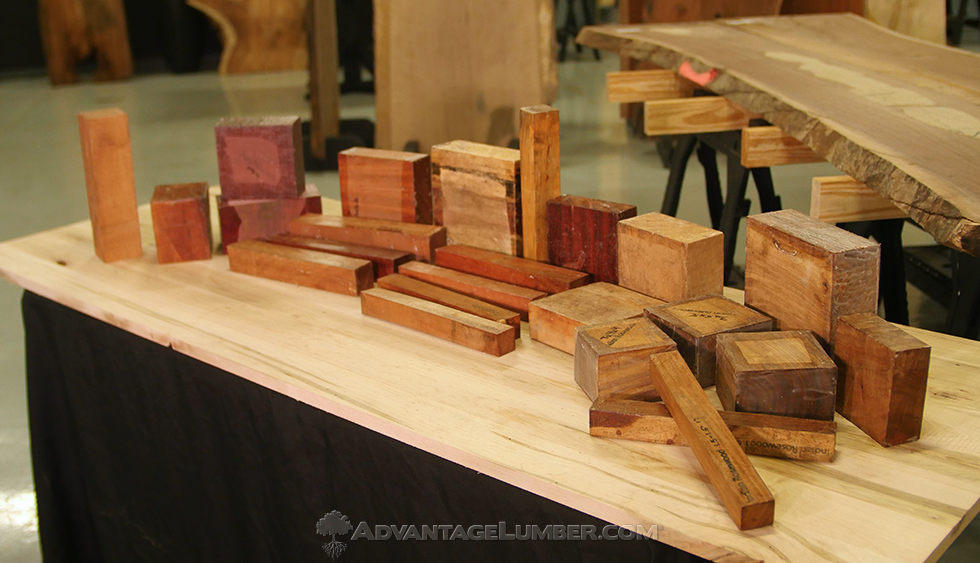- Scientific Name
- Cordia spp.
- Common Name(s)
- Bocote
- Distribution
- Mexico and Central/South America
- Average Dried Weight
- 53 lbs/ft3 (855 kg/m3)
- Specific Gravity
- Basic: .68, 12% MC: .85
- Janka Hardness
- 2,010 lbf (8,950 N)
- Modulus of Rupture
- 16,590 lbf/in2 (114.4 MPa)
- Elastic Modulus
- 1,767,000 lbf/in2 (12.19 GPa)
- Crushing Strength
- 8,610 lbf/in2 (59.4 MPa)
- Shrinkage
- Radial: 4.0%, Tangential: 7.4%, Volumetric: 11.6%, T/R Ratio: 1.9
- Appearance
- Has a yellowish brown body with dramatic dark brown to almost black stripes. Color tends to darken with age. Also, the grain patterning can be quite striking, particularly on flatsawn areas. It’s not uncommon to see many “eyes” and other figuring in Bocote: though unlike knots, they do not seem to present any special challenges in machining.
- Texture
- Grain on most decorative pieces is usually figured in some way, and also tends to be interlocked, though pieces with plain and straight grain can also be found. Medium uniform texture and a naturally oily/waxy feel. Good natural luster. Endgrain: Diffuse-porous; solitary and radial multiples; medium to large pores in no specific arrangement, few; tyloses and other mineral deposits (yellow/brown) common; parenchyma varies slightly between species, but is generally banded (marginal), as well as vasicentric, aliform (lozenge), and confluent; medium to wide rays, spacing normal to wide.
- Rot Resistance
- Heartwood is rated from moderately durable to very durable depending on the species; it is susceptible to insect attack.
- Workability
- Some species may contain silica that will dull cutters. On the whole, Bocote is easily worked and machined with good results. Although Bocote has a fairly high amount of natural oils present, gluing is usually problem-free. (See the article on gluing oily tropical hardwoods for more information.) Bocote also turns and finishes well.
- Odor
- Bocote has a moderate scent when being worked that resembles dill pickles.
- Allergies/Toxicity
- Bocote has been shown to cause cross reactions once an allergic sensitivity to certain woods has been developed. Woods that can cause initial sensitivity include: Pau Ferro, Macassar Ebony, Cocobolo, and most Rosewoods.
- Pricing/Availability
- Likely to be somewhat expensive, close to other mid-to-high priced exotic hardwoods.
- Sustainability
- This wood species is not listed in the CITES Appendices or on the IUCN Red List of Threatened Species.
- Common Uses
- Fine furniture, cabinetry, flooring, veneer, boatbuilding, musical instruments, gunstocks, turned objects, and other small specialty wood items.
- Comments
- With its striking, zebra-like contrasts, and bold figuring, Bocote can be a very eye-catching wood. Bookmatching two consecutive panels can create symmetrical “faces” and other patterns in the wood, (though a relatively thin-kerf blade should be used to minimize the shift of the pattern). Bocote is generally used for its aesthetic attributes, rather than its mechanical ones—and although Bocote is by no means weak, its strength-to-weight ratio is below average. (It is roughly as stiff and strong as Hard Maple, even though Bocote is considerably heavier.)


